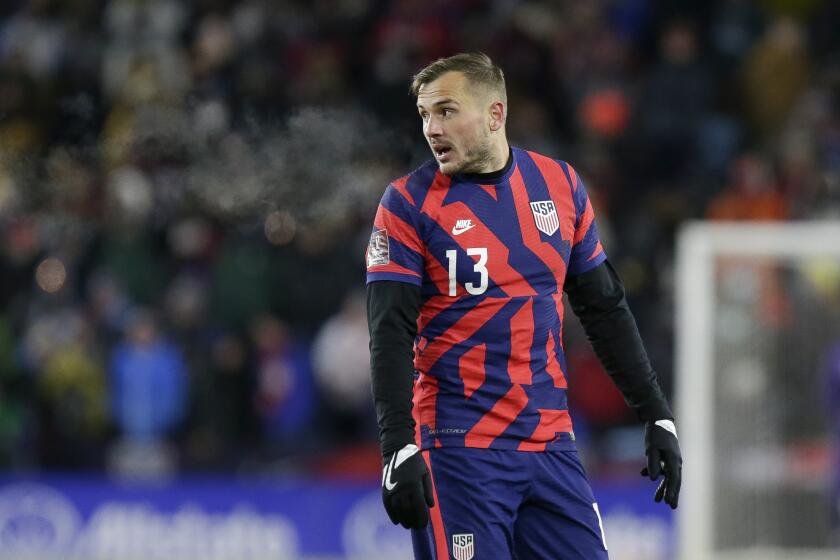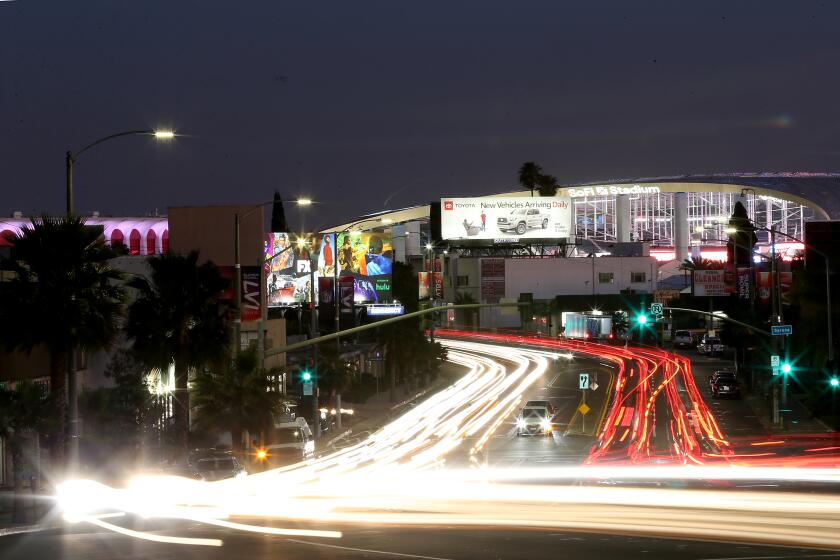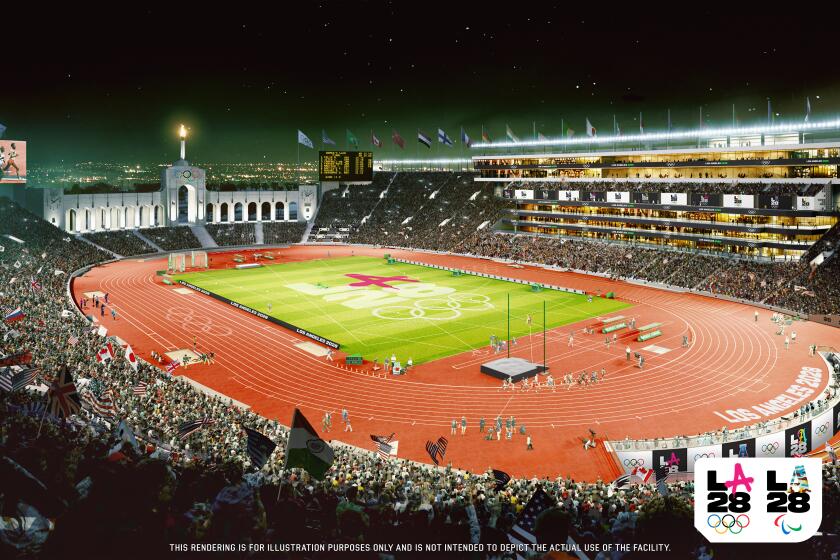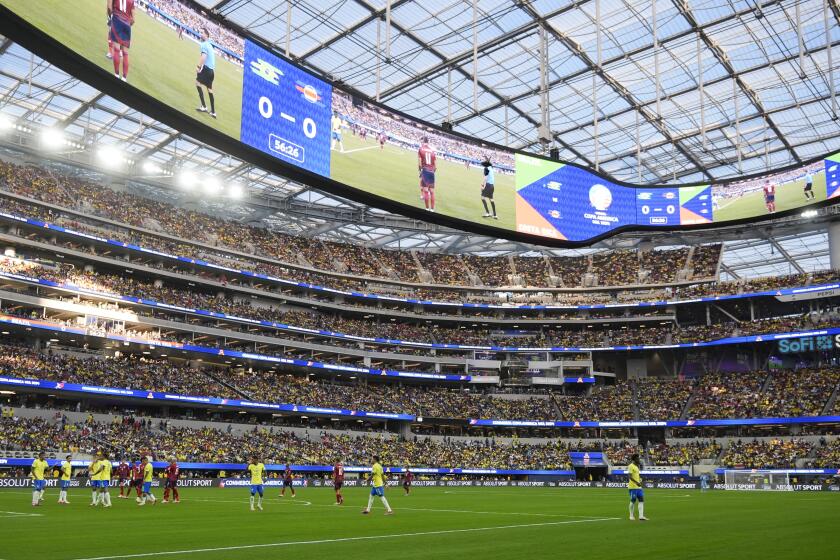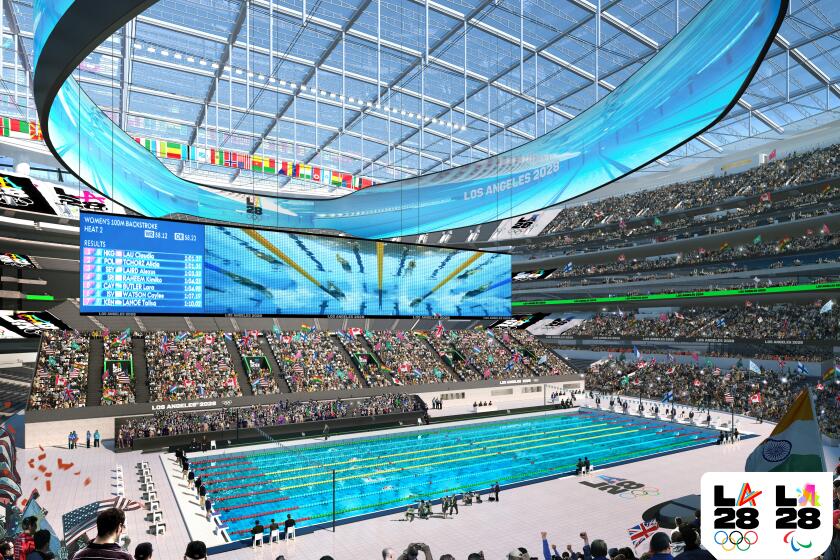SoFi Stadium in Inglewood among venues selected to host 2026 World Cup matches
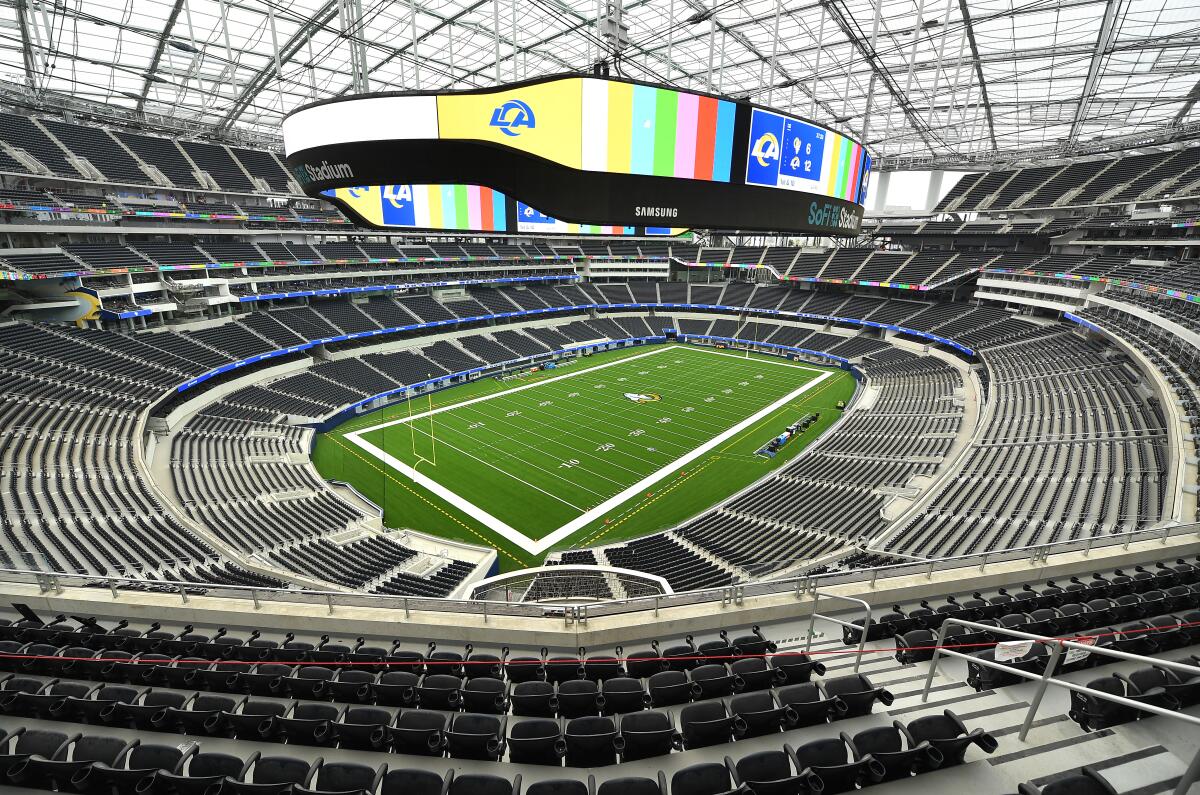
The World Cup is coming back to Southern California.
When it will get here, who will be playing and how many games will be held are still to be determined. Butwhere those games will be played was revealed Thursday when FIFA chose Inglewood’s SoFi Stadium as one of 16 venues for the 2026 tournament.
“This is huge for the city of L.A.,” said Galaxy President Chris Klein, a co-chair of the Los Angeles World Cup host committee. “We’re proud of our city and the multicultural nature of our city. But we’re also proud that it’s a soccer city.
“We’re excited to be chosen.”
The 2026 World Cup, the first ever to be hosted by three countries, will be the of the largest and most complex sporting events ever held, with a record 48 teams playing 80 games in the U.S., Mexico and Canada. Sixty of those games will spread over 11 U.S. cities, meaning SoFi will likely play host to multiple matches. Exactly how many won’t be announced for some time.
Jordan Morris scored in the first minute of second-half stoppage time, giving the USMNT a 1-1 draw at El Salvador in a soggy World Cup warmup.
And while the nine-hour time difference between Los Angeles and Europe makes venues in the Eastern time zone more logical choices to host the final, the 1994 championship game was played in Pasadena without complaint. Klein said Southern California should again be considered for some of the tournament’s marquee games.
“Our hope is to get some of the biggest matches,” he said. “We feel we have a compelling story. In our opinion, the world’s best venue in the world’s greatest city. So we’re excited to dig in.”
Ten games will be played in Mexico, split among Estadio BBVA in Monterrey, Guadalajara’s Estadio Akron and Estadio Azteca in Mexico City, which will become the first venue to play host to matches in three different World Cups. Ten games will also be played in Canada, at Vancouver’s BC Place, site of the 2015 Women’s World Cup final, and in Toronto’s BMO Field, the smallest stadium chosen with a current capacity of 45,500.
The other 10 U.S. stadiums are Seattle’s Lumen Field, Levi’s Stadium in Santa Clara, Arrowhead Stadium in Kansas City, Mo., AT&T Stadium in suburban Dallas, NRG Stadium in Houston, Hard Rock Stadium in Miami Gardens, Fla., Atlanta’s Mercedes Benz Stadium, Gillette Stadium in suburban Boston, MetLife Stadium in East Rutherford, N.J. and Philadelphia’s Lincoln Financial Field.
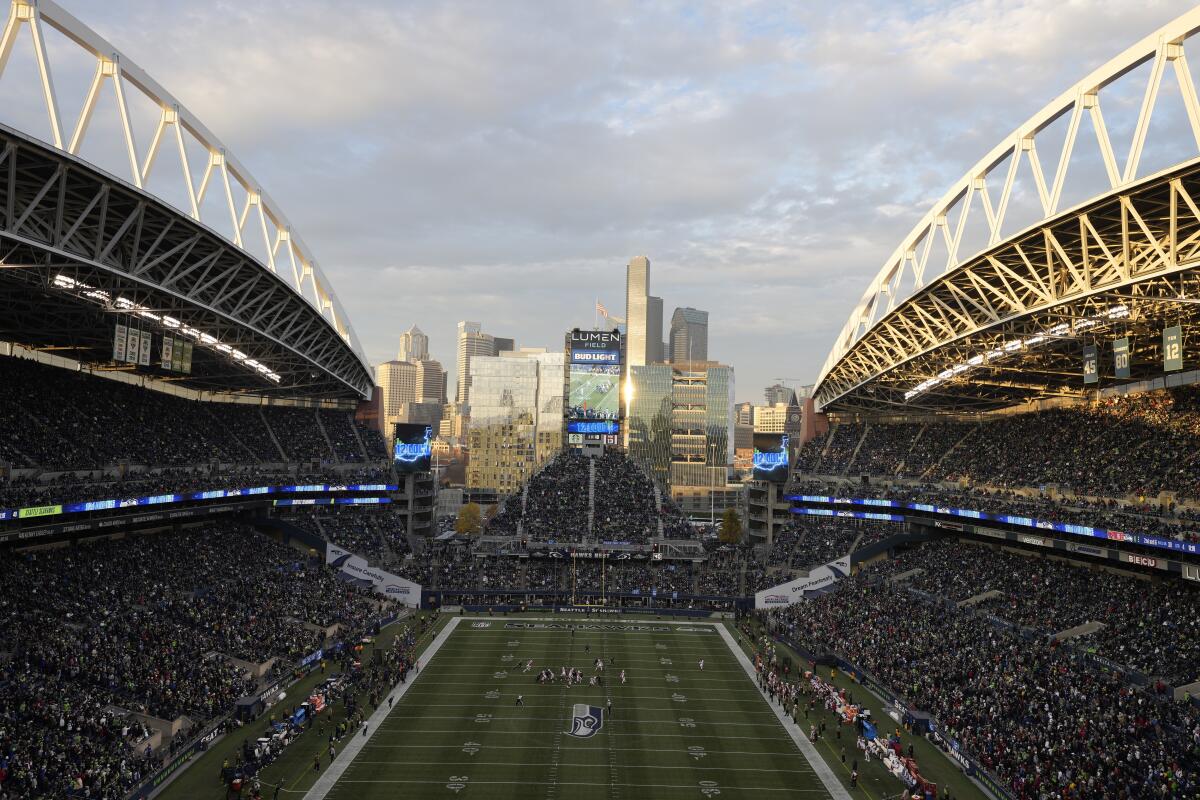
Philadelphia was a particularly inspired choice. With the tournament returning to its regular June-July schedule in 2026, FIFA has an opportunity to bring the World Cup to the city on the 250th anniversary of the adoption of the Declaration of Independence, which took place less than six miles from the stadium.
“This is an incredible win for Philadelphia,” Mayor Jim Kenney said. “FIFA saw what we all know is true: Philadelphia is a welcoming, world-class city and we have the experience to deliver a fantastic experience for teams, fans and sponsors alike.”
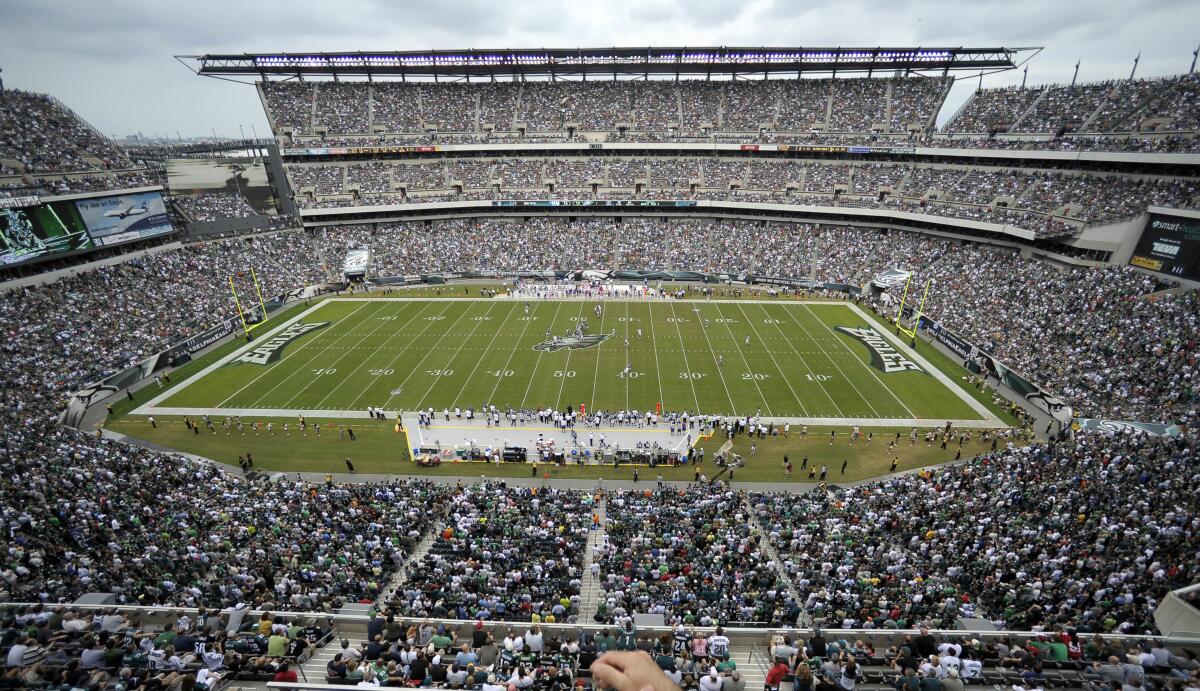
SoFi, meanwhile, has long been a FIFA favorite for more modern reasons. The most expensive stadium in the world with a construction cost of more than $5 billion, it has many of the baubles the group’s top officials like, including lavish luxury suites and close proximity to the airport. What it doesn’t have is a regulation-size soccer field.
Larry Freedman, co-chair of the host committee and co-president and chief business officer at LAFC, said that can be resolved by removing some of the demountable field-level seats in the four corners of the pitch. The artificial-turf surface will also have to be covered with a carpet of natural grass, a process that must be repeated in at least seven of the other 16 World Cup stadiums.
During the last World Cup played in the U.S., in 1994, the 52 matches were played in nine stadiums. Eight matches, including the final, were played at the Rose Bowl, which didn’t make the cut this time. Also missing the cut was M&T Bank Stadium in Baltimore, about 40 miles from Washington.
The 1994 tournament set records for both overall attendance at 3.6 million and average attendance at 68,991 a game while the economic impact for Southern California alone was estimated at $623 million.
The World Cup’s effect on the local economy in 2026 will depend on how many games are played at SoFi and what kind of ancillary draws, such as fan festivals and cultural events, are staged here. But with multiple world-class training facilities and mild summer weather when compared to other host cities such as Houston; Arlington, Texas; and Miami, Southern California could comfortably house multiple teams at a time, which gives the area a tremendous advantage.
“All cities are not created equal when it comes to the weather. It’s a little bit more reliable from that perspective,” Freedman said.
Southern California also has Hollywood, the beaches and Disneyland.
“What are you going to do for the rest of the day when you’re not training?” Freedman asked. “How are you going to amuse yourself?”
As big as the World Cup is, however, Freedman noted that it’s just part of an unprecedented series of major sporting events that will be held in Southern California in a six-year window that opened last winter when SoFi played host to the Super Bowl. Next up is Major League Baseball’s All-Star game at Dodger Stadium in July, the college football national championship game at SoFi in January and then after the World Cup, the 2028 Olympics.
“It’s a fair argument,” he said, “for L.A. being the epicenter of global sports.”
Klein said that’s something worth celebrating.
“Not only is it going to benefit soccer here, it’s going to have a tremendous benefit to Los Angeles and our surrounding communities,” he said. “A lot of work starts, let’s say tomorrow. We may take today off.”
We explore how deep Southern California’s soccer talent pool is by choosing an all-time team of players who were either born or grew up here.
2026 World Cup host cities
U.S. Atlanta, Boston, Dallas, Houston, Kansas City, Los Angeles, Miami, New York / New Jersey, Philadelphia, San Francisco, Seattle
Mexico: Guadalajara, Mexico City, Monterrey
Canada: Toronto, Vancouver
U.S. STADIUMS
AT&T Stadium (Arlington, Texas): A favorite home away from home for the Mexican national team, the Dallas Cowboys’ stadium is the largest venue in the NFL with 93,000 seats. Opened in 2009, it has a retractable roof and an artificial surface.
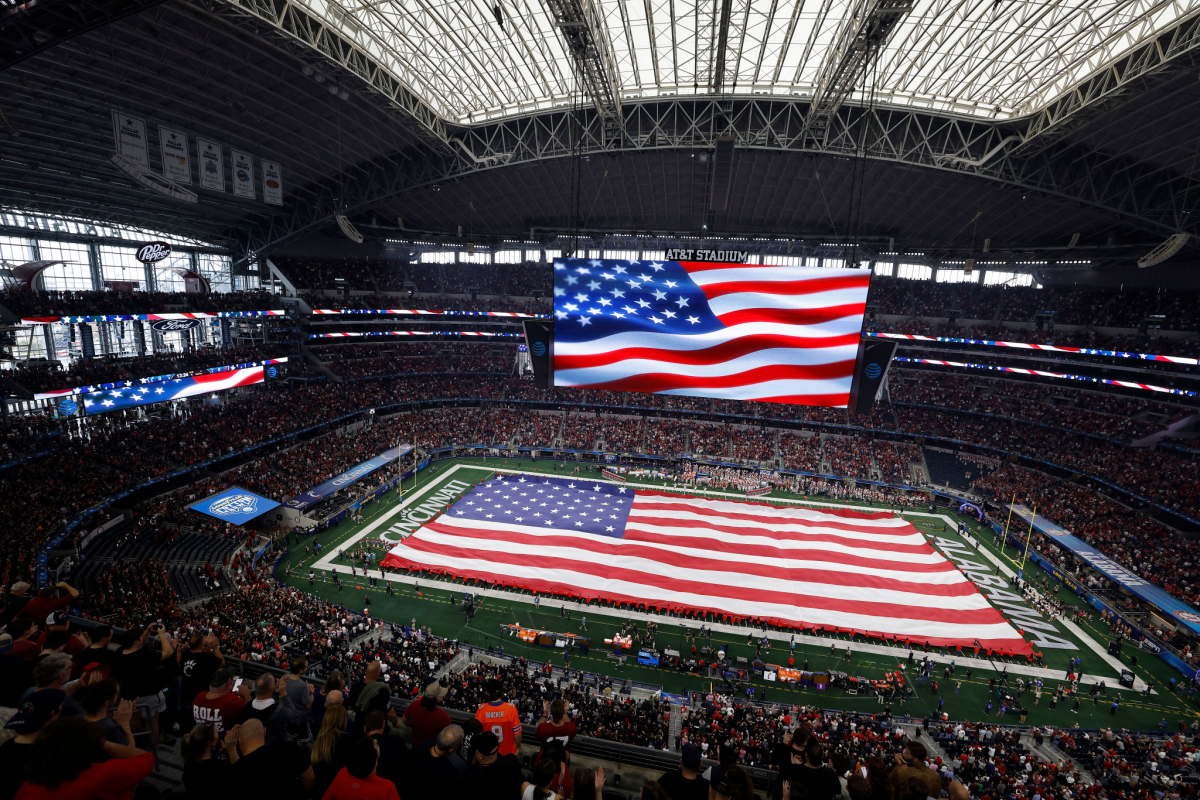
Mercedes-Benz Stadium (Atlanta): One of three NFL-MLS venues, the five-year-old stadium has a retractable roof and an artificial surface and seats about 75,000.
MetLife Stadium (East Rutherford, N.J.): The 12-year-old stadium, home to both the New York Jets and New York Giants, is the heavy favorite to land the World Cup final. It has a seating capacity of about 87,000 and has an artificial surface.
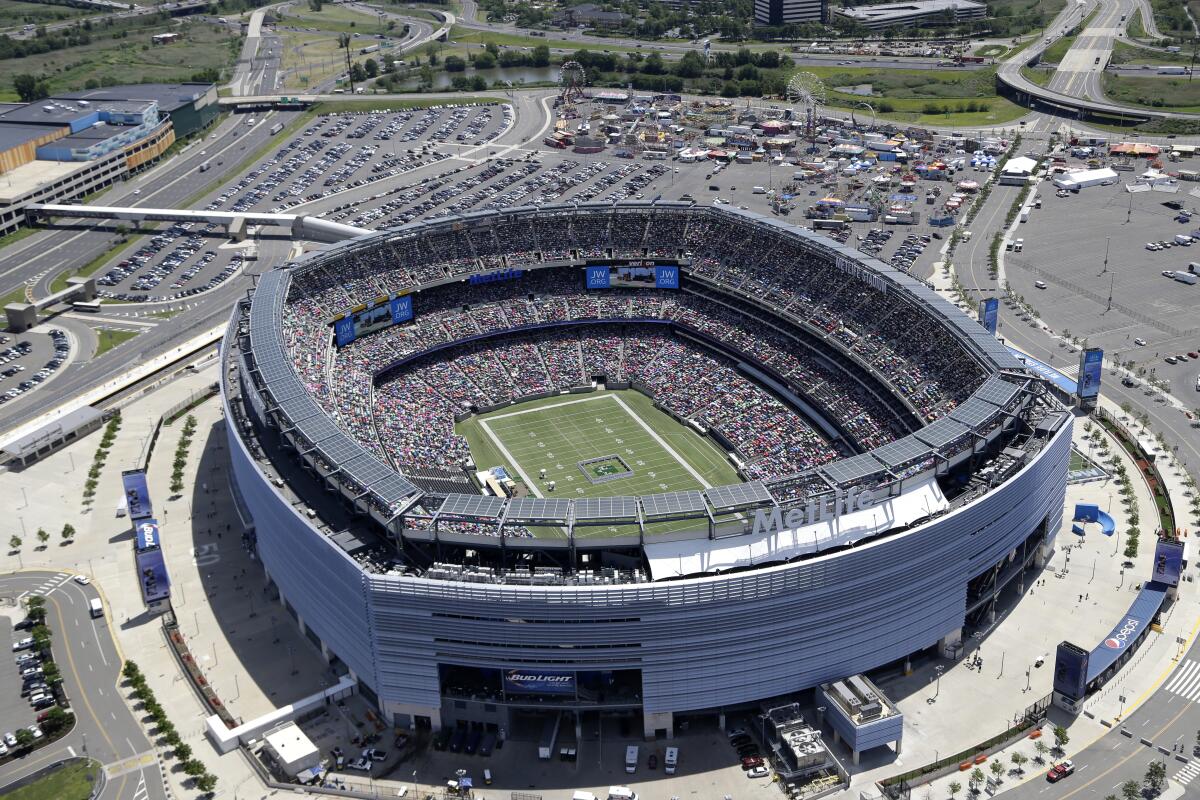
Gillette Stadium (Foxborough, Mass): Suburban Foxborough played host to games at the 1994 World Cup but Gillette Stadium is a different venue. Opened in 2002, it has a seating capacity of about 70,000.
NRG Stadium (Houston): One of two Texas stadiums on the list, NRG opened in 2002, has a seating capacity of about 72,000 and an artificial surface. Its retractable roof and air conditioning will be important given the area’s summer heat and humidity.
Arrowhead Stadium (Kansas City, Mo.): The second-oldest stadium on the list, Arrowhead opened in 1972 and has been renovated several times, most recently in 2010. The seating capacity is about 76,000 and it has a grass surface.
Hard Rock Stadium (Miami Gardens, Fla.): Miami appears to be a cinch to get at least one game. The venue, which has a seating capacity of about 67,000, a grass surface and a roof that covers spectators, opened in 1987 and has been renovated multiple times. It has hosted numerous international soccer exhibitions.
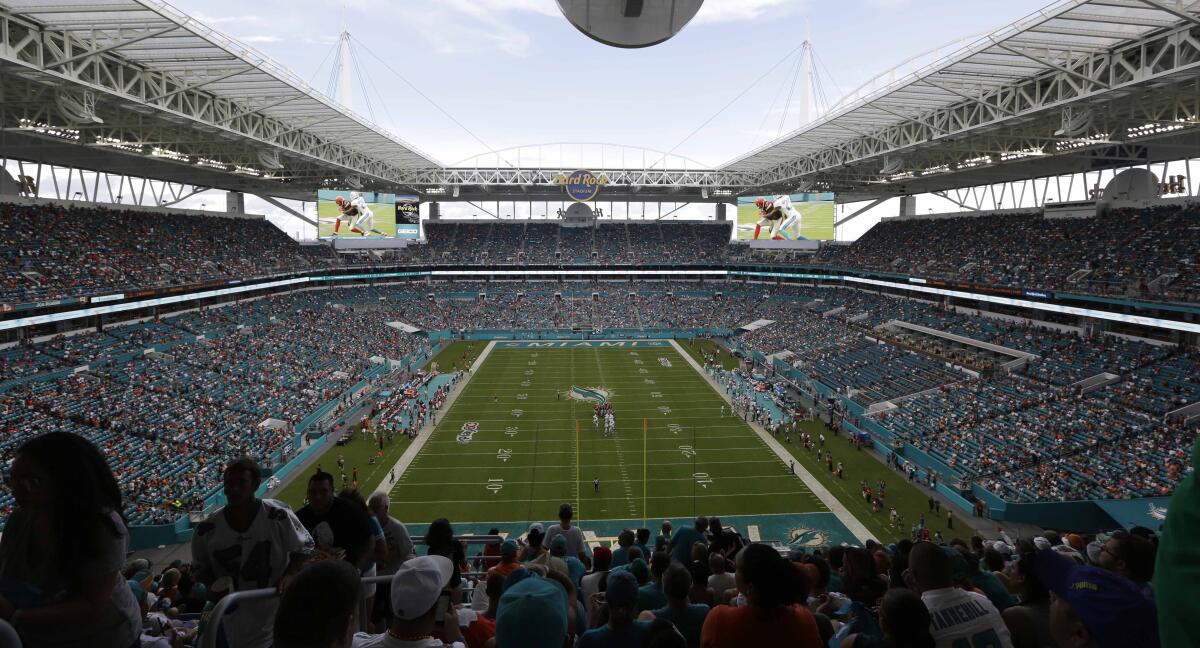
Lincoln Financial Field (Philadelphia): When the facility opened in 2003 its first event was a soccer match between Manchester United and Barcelona. The stadium serves as the home venue for the Philadelphia Eagles and Temple University. The 2015 CONCACAF Gold Cup final was played at the stadium, with Mexico beating Jamaica 3-1. The stadium seats nearly 70,000 spectators and has a natural grass surface.
Levi’s Stadium (Santa Clara): Opened in 2014, the stadium has played host to a Super Bowl and several major soccer games. It has a capacity of about 71,000 and has a grass surface.
Lumen Field (Seattle): Home to the NFL’s Seattle Seahawks, the OL Reign of NWSL and the Sounders of MLS, the stadium opened in 2002 and has a capacity of about 69,000.
SoFi Stadium (Inglewood): Newest of the World Cup venues, SoFi, the most expensive stadium on the planet, opened in 2020. It has a seating capacity of about 70,000, an artificial surface and a fixed roof as well as a narrow field that will have to expanded.
CANADA STADIUMS
BMO Field (Toronto): Home of the Toronto Argonauts of the CFL and Toronto FC of MLS, it was originally constructed as a soccer venue. It has a hybrid surface and can expand to about 45,000.
BC Place (Vancouver, Britsh Columbia) Opened in 1983, BC Place has served as the home of the BC Lions of the CFL since its inauguration. The stadium also hosts home games for the Vancouver Whitecaps of the MLS. The stadium has a capacity of about 54,000 and was last renovated in 2011. It has an artificial surface.
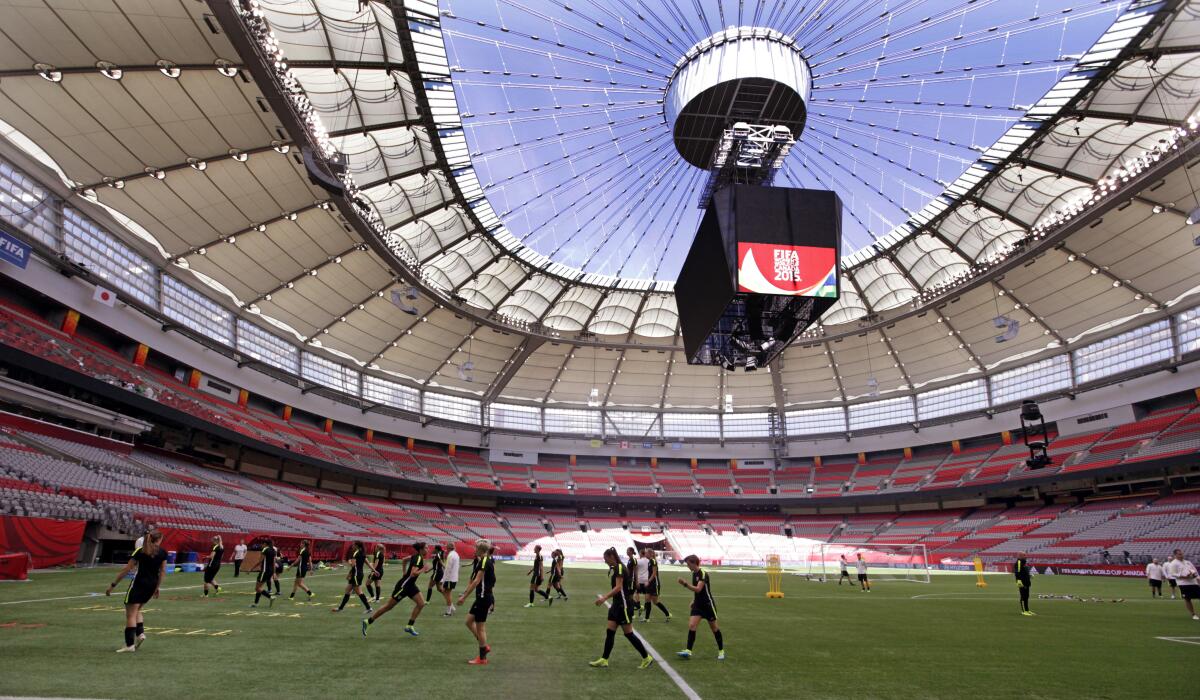
MEXICO STADIUMS
Estadio Akron (Guadalajara): Opened in 2010, it has hosted a Copa Libertadores final and the opening ceremony of the 2011 Pan American Games. Mexican soccer club Chivas plays its home matches at the venue, which has a capacity of about 48,000 and a grass surface.
Estadio Azteca (Mexico City): One of the most iconic stadiums in soccer, it played host to World Cup finals in 1970 and 1986 as well as the 1986 quarterfinal between Argentina and England in when Diego Maradona scored two of the most memorable goals in history. Opened in 1966 and reconfigured several times since, it has a capacity of about 87,000 with a grass surface. It’s also more than a mile and a third above sea level.
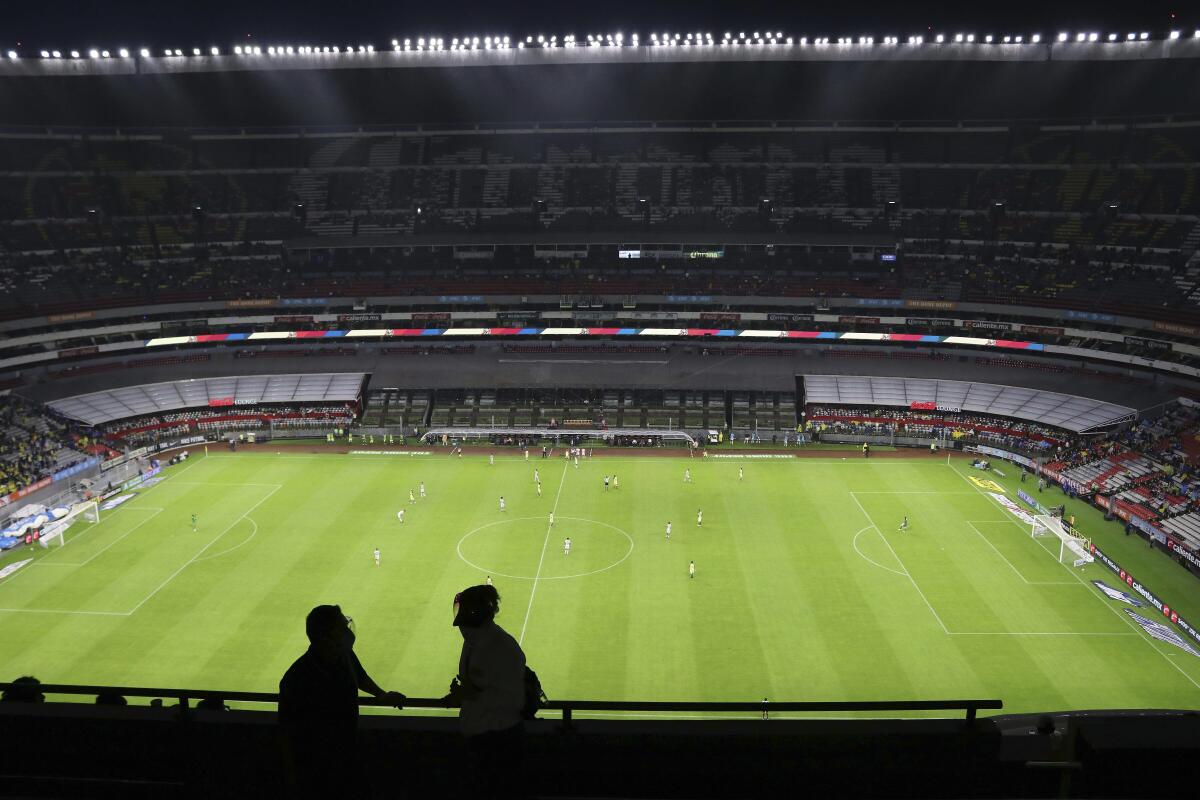
Estadio BBVA (Monterrey): Opened in 2015, it has a grass surface and seating for about 53,000. Mexican club Monterrey plays it home matches at the stadium.

